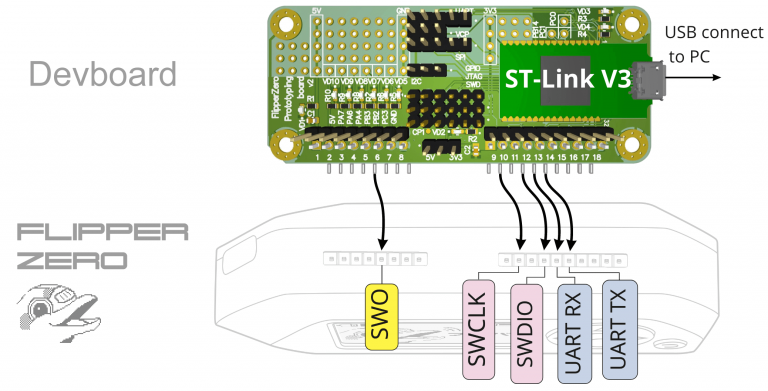How floating point accelerates AI and technology

The emergence of hardware support
After the approval of the IEEE 754 standard, processor manufacturers began to actively implement hardware support for floating point operations. Mathematical coprocessors appeared, such as the Intel 8087, which worked in tandem with the main CPU and accelerated calculations tenfold.
Soon the functions of coprocessors were integrated directly into central processors. For example, starting with the Intel 486DX, the FPU (Floating Point Unit) has become an integral part of the CPU. This made it possible to perform complex mathematical operations faster and more efficiently, paving the way for the development of graphics, scientific computing, and many other fields.
Modern processors are equipped with powerful FPUs that support various floating point formats and are capable of performing billions of operations per second. Additionally, vector instructions such as SSE, AVX and AVX-512 have been developed, which allow operations on multiple numbers simultaneously, significantly increasing performance.

Floating point on GPU
Graphics processing units (GPUs) were originally created to speed up graphics rendering, where floating point operations play a key role. Their architecture is designed for massive parallelism, allowing thousands or even millions of operations to be performed simultaneously.
With the development of technology, GPUs began to be used not only for graphics, but also for general computing (General-Purpose computing on Graphics Processing Units, GPGPU). The programming languages CUDA from NVIDIA and OpenCL from the Khronos Group have opened up access to the power of the GPU for solving a variety of problems, including scientific calculations, modeling and, of course, training neural networks.
One of the key factors for GPU efficiency is support for various floating point formats, including small formats such as FP16 (16-bit semi-precision) and even INT8 (8-bit integers). This allows you to optimize calculations, reducing energy consumption and increasing data processing speed.

Computational accuracy and the role of quantization in working with AI
In the modern world, artificial intelligence and neural networks have become key elements of many technologies. Processing huge amounts of data and complex models requires significant computing resources. To optimize the operation of such systems, various methods are used, including the use of numbers with reduced precision and hardware accelerated calculations, which allows efficient processing of information and speeding up various processes.
Number accuracy

Numbers can be represented with different precisions. For example, FP32 (32-bit floating point) allows very precise storage of real numbers, which is critical for training models where high precision is required to correctly adjust the weights.
However, in subsequent stages, as well as during use, such precision may be unnecessary, since it increases the amount of memory used and negatively affects the computation time. To optimize the AI training process, you can use FP16 (16-bit floating point), which is an intermediate option but remains accurate enough for most purposes.
In most everyday problems, once the model has already been trained, it makes sense to use less precise representations of numbers, such as INT8 (8-bit integers). Using such numbers helps process most queries without losing model quality, especially in speech and text processing tasks.
Quantization of neural networks

Quantization is the process of converting numbers from more precise formats (for example, FP32) to less precise ones (for example, INT8). The main idea is that by using quantization, you can significantly reduce the amount of computation and memory consumption with minimal impact on the quality of the results.
Let's briefly look at the process itself:
Value compression, that is, instead of exactly representing all the decimal places that are used in the floating point format, the number is rounded to the nearest integer that can be represented in the new format.
Scale and shift: scale determines how much the original numbers will be “stretched” or “compressed” to fit the new range, and zero-point allows negative and positive numbers to be displayed correctly by shifting the range of values.
Visually for us, it looks like the picture we see in 32-bit format, but we have reduced the color settings to 128 shades. We simplified the image, but the picture remained recognizable.

Architectures Optimized for AI
Hardware companies are actively developing solutions specifically designed for artificial intelligence and machine learning tasks.
Nvidia and their graphics accelerators
Nvidia is committed to developing GPUs that are optimized for AI training and inference. The success of their accelerators is largely due to specialized tensor cores, which significantly speed up work with floating point numbers, as well as careful development of software support for their products. For a better understanding, let’s note several features of Nvidia accelerators:
Advanced tensor cores that accelerate various computation modes in hardware: BF16, TF16, FP32 and others;
Availability of specialized architectures aimed at working with AI: Blackwell, Hooper, Volta;
High energy efficiency, allowing to reduce energy costs and reduce heat generation.

Other companies and solutions
AMD: develops solutions for AI and HPC. Radeon Instinct accelerators with matrix cores accelerate machine learning workloads. The AMD Instinct MI300X series on CDNA™ 3 architecture supports formats from INT8 to FP64, delivering high performance and energy efficiency.
Google: developed specialized TPU (Tensor Processing Unit) processors optimized for working with Bfloat16 and INT8 formats.
Ampere Computing: produces unique ARM processors with built-in 128-bit vector blocks that efficiently perform linear algebra operations, which are the basis of most machine learning algorithms.
Intel: Integrates technologies to accelerate low-precision operations into its processors, such as Intel DL Boost. In addition, Intel offers dedicated Gaudi accelerators to accelerate AI training and inference, as well as Intel GPU Max graphics processors, which can serve as an excellent solution for high-performance computing.

Practical application of small numbers
The use of small floating point numbers has wide practical applications in various fields.
Mobile devices and embedded systems
The limited resources of mobile devices require efficient use of memory and energy. Model quantization allows you to run complex neural networks on smartphones, tablets and IoT devices, providing speech recognition, image processing and other AI services.
Cloud services and data centers
In large data centers, reducing power consumption and increasing computing density are key goals. Using processors and accelerators optimized for small numbers allows you to process more data at a lower cost.
Automotive industry
Autonomous driving and driver assistance systems require processing huge amounts of data in real time. Optimizing calculations using small numbers provides the necessary speed and efficiency.
The future of small floating point numbers

As technology continues to evolve, we can expect new data formats and methods to emerge.
New data formats: There may be even more efficient number formats, such as Posit, that promise to improve accuracy and performance.
Hardware Innovation: The development of quantum computing and neuromorphic chips can change the approach to information processing.
Algorithmic improvements: New training and optimization techniques may allow even lower levels of accuracy to be used without losing model quality.
Conclusion
Floating point numbers is not just a mathematical abstraction, but a key tool of modern computing. Various formats of these numbers allow you to adapt to the specific requirements of tasks, balancing accuracy, speed and efficiency.
Have you ever had to use optimization involving floating numbers in your tasks, or perhaps even independently design a new structure for storing some specific data of special volume or accuracy? It will be interesting to read in the comments and thanks for reading!





